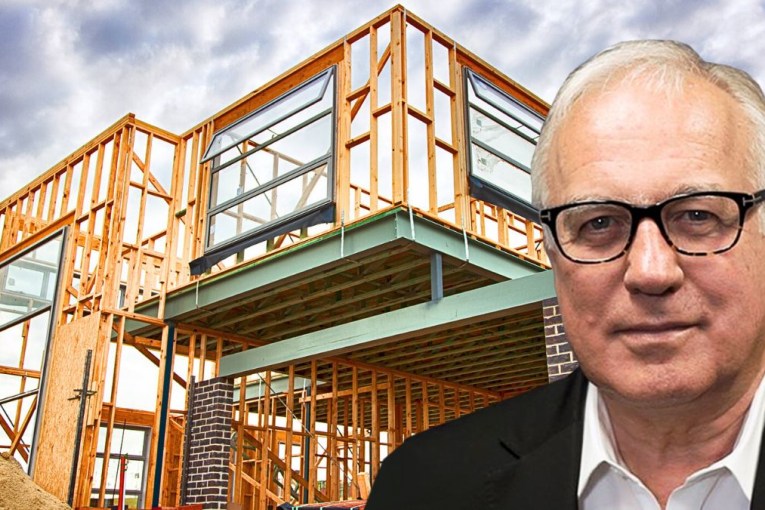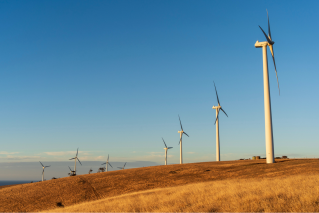Alan Kohler: The reality of the climate change crisis will be hugely expensive


Australia is sleepwalking into trouble on climate change. Photo: TND/Getty
It was 12 months on Wednesday since America’s Inflation Reduction Act was signed into law by President Biden.
It was, and still is, the most important climate action since the Paris Agreement of 2015, and is having a profound impact on the US, and the world.
So I was gearing up to mark the anniversary by crisply urging the Australian government to do the same, but I’m not going to now.
The Inflation Reduction Act is about money – lots of it. A year ago, the official estimate of the spend on electrification, renewable energy and other climate change measures was $US369 billion over a decade, but a paper by the Brookings Institution in March now puts the cost at $US1.2 trillion, and nobody seems to mind.
That’s $567 billion rising to $1.8 trillion. In GDP-relative terms, we’re talking $37 billion and $116 billion now. That’s how much Anthony Albanese would have to spend to match Joe Biden.
This year’s federal budget contained a bunch of new spending measures, but they mostly start with ‘m’ for millions not ‘b’ for billions. The total is well short of $37 billion, let alone $116 billion.
Also, Australia’s climate spending can’t blow out because it’s announced in dollars, whereas the Inflation Reduction Act is open-ended legislation and the original $US369 billion was just a guess that has been surpassed because of its success.
Anyway, I was going to celebrate the Inflation Reduction Act’s first birthday with some rollicking castigation of the Albanese government for bringing its pea shooter to a gunfight, but thought better of it.
Climate change can’t be stopped, especially by us – it’s already happening – and it’s going to be very expensive. All available money will be needed to deal with it.
Tipping points being passed
Yes, we must do our bit to reduce emissions and not add to them, and Australia’s spending does look pathetic alongside America’s, particularly considering that the US started with a budget deficit of $US1.4 trillion, whereas Australia now has a surplus.
And achieving even our inadequate climate change targets of 43 per cent emissions reduction by 2030 and net zero by 2050 looks difficult, with the required reduction of 4.9 per cent per annum by big emitters to be achieved almost entirely by the buying of offsets rather than actually reducing emissions.
But global heating is happening faster and more damagingly than expected, and it is not going to be kept to 1.5 degrees Celsius above pre-industrial age temperatures as everyone had hoped. It’s more likely to be 2 degrees or more, with tipping points being passed in the Arctic and Antarctic ice shelfs with unknown, but probably dramatic, consequences.
We should hope for 1.5 degrees, but prepare for 3 degrees.
For Australia, it comes down to four categories:
- Electricity
- Fires
- Floods
- Sea level.
Electricity
Since the last El Nino in 2016, four coal-fired power stations have closed – Hazelwood, Northern, Vales Point A and Liddell. Eraring is scheduled to close in 2025, but there’s an argument about that.
Another dry, hot El Nino is getting under way this year.
There are 7.6 million homes in Australia with air-conditioning. That number will increase as temperatures rise.
How will the electricity system cope with eight to nine million homes running air-conditioners day and night for months on end?
In February, CEO of the Australian Energy Market Operator (AEMO), Daniel Westerman, warned that “urgent and ongoing investment in renewable energy, long-duration storage and transmission is needed to reliably meet demand from Australian homes and businesses”.
Now AEMO is quietly preparing for an El Nino summer, bringing higher temperatures with much more air-conditioning, as well as drought. Power stations need water for cooling; drought makes them unreliable.
In addition, there is a push to electrify household appliances and heating, while electric vehicle sales are soaring, so electricity demand is already in a steep structural uptrend when all the air-conditioners get turned on this year.
Fires
In an essay published in The Conversation last week, David Bowman, Professor of Pyrogeography and Fire Science at the University of Tasmania, wrote in response to the devastating fires in Hawaii that “Australia is sleepwalking into our fiery future”.
He was referring specifically to the 2020 recommendations of the bushfire royal commission, which was called the Royal Commission into National Natural Disaster Arrangements.
Professor Bowman called the recommendations a “clarion call for change – across land-use planning, infrastructure, emergency management, social policy, agriculture, education, physical and mental health, community development, energy and the environment”.
Three years on, very little, if anything, has happened.
Floods
Following last year’s floods, insurance premiums have gone up across the board, and by 50 per cent and more in high-risk areas.
This month the Actuaries Institute released a report on insurance affordability which concluded that one million households are suffering “extreme home insurance affordability pressure”. A lot of those families are now uninsured.
If one uninsured family loses their house, they’re on their own; if 1000 families lose their houses, it’s the government’s problem.
Global warming plus El Nino will mean floods in northern Australia and fires in the south – permanently. Many thousands of the homes in the path of water and flames will be uninsured.
And then there’s infrastructure.
Sea level
It’s estimated that 2 degrees of warming will raise the global sea level by one metre. About 250,000 Australians live less than one metre above high tide.
That’s bad enough, but the issue with sea level rise is more about refugees than what happens on Australia’s coast.
In 2019, Professor John Church from the Climate Change Research Centre at the University of New South Wales noted that 230 million people worldwide live within one metre of high tide, most of them in Asia and the Pacific.
A lot of those people will want to come to Australia and stay once their homes go under, especially the two million or so who live on Pacific Islands that will disappear. Are we going to turn them away? Can we?
In 2015, the Australian government published something called the National Climate Resilience and Adaptation Strategy and updated it in 2021.
It was mostly waffle, but PM Scott Morrison also announced the “Preparing Australia Program” with a budget allocation of $600 million.
Anthony Albanese added $200 million a year to that last year.
Those numbers aren’t nothing, but the reality of what’s coming will require at least one nought to be added, if not a few.
Alan Kohler writes twice a week for The New Daily. He is finance presenter on ABC News and founder of Eureka Report








